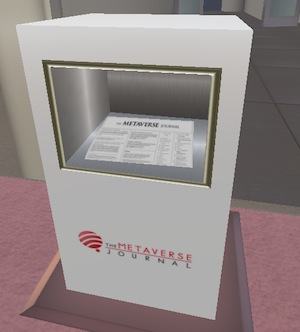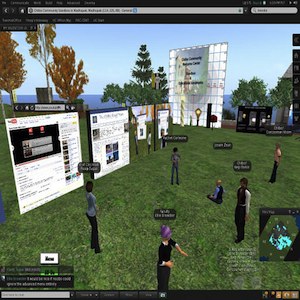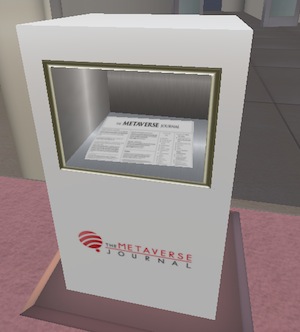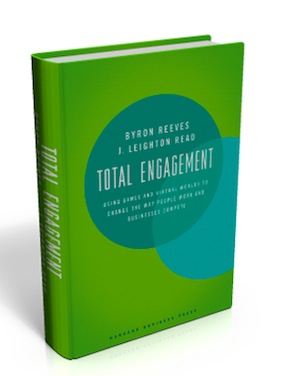 1. Casualgaming (USA) – GDC: Virtual worlds need better player contact, says Habbo Hotel designer. “Speaking at today’s Game Developers Conference’s Social and Online Games Summit, the lead designer of Habbo hotel has suggested that virtual worlds are loosing out on an opportunity to welcome more users because of an ingrained blinkered focus on real time interaction. In his session, titled What Virtual Worlds Can Learn From Social Games, Sulake’s Sulka Haro shed light on the fact that many virtual worlds only engage their customers in real time when the player is in the world. “Virtual worlds are historically too obsessed with real time,” stated Haro, adding: “The problem with that focus is that if a virtual world is synchronous, it is temporal. In other words, if the player isn’t there the world doesn’t exist.”
1. Casualgaming (USA) – GDC: Virtual worlds need better player contact, says Habbo Hotel designer. “Speaking at today’s Game Developers Conference’s Social and Online Games Summit, the lead designer of Habbo hotel has suggested that virtual worlds are loosing out on an opportunity to welcome more users because of an ingrained blinkered focus on real time interaction. In his session, titled What Virtual Worlds Can Learn From Social Games, Sulake’s Sulka Haro shed light on the fact that many virtual worlds only engage their customers in real time when the player is in the world. “Virtual worlds are historically too obsessed with real time,” stated Haro, adding: “The problem with that focus is that if a virtual world is synchronous, it is temporal. In other words, if the player isn’t there the world doesn’t exist.”
2. The Independent (UK) – Digital disguises: Who do they think they are? “It was a boring corporate job that piqued the interest of the photographer and video artist, Robbie Cooper. “I met a company boss who was divorced and had bad access to his children,” Cooper recalls. “So they met every evening in Everquest, an online 3D virtual world”. Cooper asked the man what he and his children did as they carried massive swords around a land populated by fire-breathing dragons. “They talked about homework, their mother and school,” Cooper says. “I was fascinated by the idea of this really banal but emotionally important conversation going on in this vivid fantasy world.”
3. The Big Money (USA) – Forget Invisible Hands. What About Virtual Hands? “Back in 2008, it seemed like only one thing was certain about the government’s Troubled Asset Relief Program: It was a gamble. A really big one. The economy’s problems were unprecedented and the potential remedy untested, which meant that economists could do little more than speculate about how hundreds of billions in bailout money would affect the country’s overall fiscal health. In a New York Times article from February 2009, Treasury Secretary Timothy Geithner was quoted as saying of TARP, “We will have to try things we’ve never tried before.†But, some economists are beginning to ask, what if such broad economic policies could be tested first? Not on living, breathing, tax-paying citizens, mind you, but on goblins, wizards, and intergalactic space pirates.”
4. Washington Post (USA) – Second Life’s virtual money can become real-life cash. “Dana Moore sells rain. He sells a lot of it, for about a buck per reusable storm. “I don’t know why people love buying rainstorms,” he said, watching his product drizzle last week, “but they do seem to like them a lot.” The attraction isn’t rain, per se, but Moore’s rain, which can deluge swaths of land on command. The rain falls not in Bowie, where he lives with his wife of 37 years, but in the virtual world of Second Life, the Web portal where he also markets snow, clocks, University of Maryland basketball T-shirts, Duke basketball T-shirts (grudgingly), two-story Tudor-style homes, pinup posters from the 1930s and the sounds of barking dogs.”
5. The Province (Canada) – Finding backbone in virtual world. “When faced with creating an avatar, you can bet your mouse that no one is dreaming up their virtual doppelganger. Snoop around the online fantasy front and you’ll find lots of King Leonidas and Zena: Warrior Princess types — not so many Ed Grimleys. It’s a misrepresentation along those lines that is at the heart of the new play Spine, here in Vancouver as part of the Cultural Olympiad. Spine opens with a 40-year-old disabled man (James Sanders) losing his job and his relationship. He retreats to a place he feels the most empowered — the rehab facility he spent time in after suffering a spinal-cord injury. It’s there he meets a much younger and newly injured patient who turns him onto the virtual role-playing world.”
6. Virtual Worlds News (USA) – Sometrics Launches GameCoins Platform; IMVU Joins Up. “Today Sometrics announced the launch of GameCoins.com, a virtual goods marketplace and social platform designed to help virtual worlds and online games both grow their reach and monetize. GameCoins.com will feature user blogs and friend lists that allow users to recommend games and virtual worlds to each other. Users will be able to obtain virtual goods and currency for favorite games through GameCoins.com using the Sometrics Offer Solution, an ad offer network. “This is the first time we’re going to consumers directly with our virtual currency products,” said Sometrics CEO Ian Swanson, in a press statement. “Until now, our solutions for earning that game’s virtual currency have lived within the individual games themselves. But with GameCoins we can broaden the reach for all the publishers and games that partner with us. It serves as a hub for consumers, to enable them to share their enthusiasm for a game with others and, while there, discover new games for themselves.”
7. New Scientist (USA) – Amputees could get a helping hand in the virtual world. “WHAT is the best way to for someone to get used to their artificial limb? Put them in a virtual environment. So says Anthony Steed, a computer scientist at University College London, who has been studying how the rubber hand illusion works in virtual worlds. In the standard illusion, a false hand is placed on a table in front of a volunteer whose real hand is out of view, and both are stroked at the same time. After a while people feel a sensation in the rubber hand, even when it is the only one being touched. Steed has now discovered that people relate to virtual appendages so strongly that much of the set-up work normally needed to pull off the illusion is unnecessary in virtual environments. For example, people automatically experience ownership of their virtual limbs, without needing simultaneous stroking in the real world, claims Steed.”
8. Washington Post (USA) – Teleporting to reality: Reporting in Second Life. “Earlier this week, I wrote about the booming economy in Second Life, the online portal where people spend lots of money to outfit their avatars with fancy shoes, nice eyes, long hair, short hair, tight jeans, business suits, bathing suits, and anything else you could buy in Tysons Corner. Although the stuff in Second Life is digital — just pixels on a screen — the materials people buy, and the land they rent to build their houses, seem every bit as real as the place where you are reading this blog. For a reporter, interviewing people in Second Life offers opportunities that sometimes seem harder to come by these days — namely, interviewing subjects in their homes.”
9. Wall Street Journal (USA) – Warcraft row: An industry game-changer in China. “NetEase is a veteran of Chinese online gaming, with seven years of industry experience. So it was stunned when a seemingly straight development path suddenly descended into a dark maze after the company sought government permission to operate China’s version of “World of Warcraft: The Burning Crusade,” an online role-playing game enjoyed by millions of Chinese. NetEase eventually succeeded. But along the way, the company lost a lot of money and had to play games with a pair of competing bureaucracies that each sought an upper hand in regulating the online gaming business.”
10. TechRadar (UK) – Blizzard: World of Warcraft unlikely to appear on console. “Blizzard has said that its massively popular MMO World Of Warcraft will likely never arrive on home console. World of Warcraft is currently available on the PC and on the Mac and, according to the game’s lead producer J. Allen Brack there are a lot of reasons why it won’t appear on Xbox 360 or PS3 anytime soon.”








Recent Comments